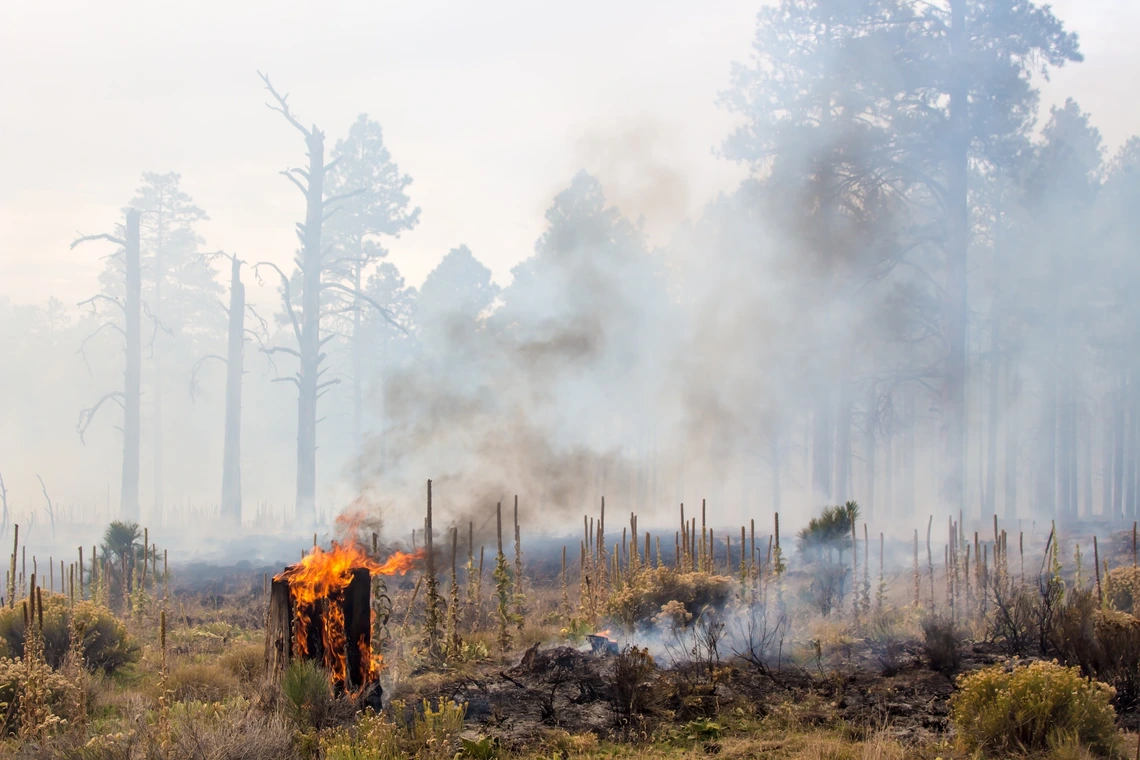With wildfire season upon us, a few precautions can protect your home
A few hours clearing brush and trimming trees could prevent disaster as temperatures rise and Arizona's drought continues.

It doesn't take a forest fire to burn down your house - a grass fire can do it. With monsoon approaching, it's not too late to protect your home.
Jon Manjeot - stock.adobe.com
With full desert heat upon us in Arizona and drought dominating much of the state, it’s time to take a look around your property and beef up your wildfire defenses.
Just two small parts of northern Arizona were not in severe, extreme or exceptional drought on June 10, according to the U.S. Drought Monitor, a collaboration among the University of Nebraska-Lincoln, National Oceanographic and Atmospheric Administration and the U.S. Department of Agriculture.
Wildfire intensity and frequency are both closely tied to vegetation. Meager winter rainfall in much of the state affected different areas in different ways, said Chris Jones, a Cooperative Extension Agriculture and Natural Resources agent.
Forests at higher elevation are at increased risk, because the lack of rain left trees dry and primed to flare. But the lack of rain stunted growth of brush and grasses that fuel fires at lower elevations, Jones said.
“That's not to say that those of us at the lower elevations don't need to be fire wise, but I don't think we're likely to have events like the Telegraph or Bush or Big Horn fires, because we don't have the fuels at lower elevation,” he said, naming Arizona wildfires that each burned through more than 100,000 acres in the past five years.
At lower elevations, invasive plants are an important part of the picture – including buffelgrass, red foxtail brome and stinknet. Jones has surveyed some lower elevation areas, and although there are some dried plants from last year, this year’s ground cover is not as bad as it could be, he said.
Protect Your Home
When it comes to protecting your home, you should look at three zones.
The first is from 0 to 5 feet from the drip line of the eaves – or about 6 to 8 feet from exterior walls.
In this zone, you should replace shrubs or other ornamental plants with pavers or decking. Put potted plants there, so you can move them away from the house if a fire threatens the property, Jones said.
Also make sure you have gravel, not weeds, under any decks attached to the house, and enclose the sides of the deck to prevent embers from getting under it, and don’t store firewood on a deck or near the house, he said.
The next zone, from 5 to 30 feet away, should be carefully maintained. In this space, you can have a lawn, garden, small trees or other well-maintained landscaping. But keep this zone manicured – don’t let vegetation get overgrown.
Beyond 30 feet you should have what Jones called treated natural landscape.
“Get out there with your weed-eater or lawn mower. Take down any overgrown grasses, anything that's going to help carry the fire, and then prune trees and thin them out if they're close together,” he said.
Don’t be fooled by the words forest fire. It doesn’t take a forest to burn your house down.
“When the flames under the trees get big enough to get into the canopy, of course that becomes a different type of fire, but it's entirely possible for flying embers from a grass fire to burn down a house. You don't need a major concentration with trees burning for your house to burn down,” Jones said.
InciWeb, an interagency website that provides wildfire information for the public, listed seven fires in Arizona on June 10. The largest was the 20,000-acre Greer Fire southwest of Eagar, which is 100 percent contained. No other fire in the state in early June had reached 5,000 acres, according to InciWeb.
As monsoon approaches, dry lightning will become a problem. Human-caused fires often start in areas that are easily accessible. But lighting can happen any time and strike 20 miles from a road, forcing firefighters to use air airborne attack. Either way, it’s in your best interest to take action now, so you can stay safe if a wildfire starts near you.
Learn More
For more information on protecting your home, see these Extension publications:
- Protect You Home from Wildfire
- FIREWISE Plant Materials for 3,000 ft. and Higher Elevations
- Fire Resistant Landscaping
- Wildfire Hazard Severity Checklist
- Homeowner Wildfire Checklist
- Homeowner Guide to Living with Wildfire
- Fire Safety for Wildland Homes
- Wildfire Risk Reduction in Arizona's Interior Chaparral
- Recovering from Wildfire
- Erosion Control after Wildfire

